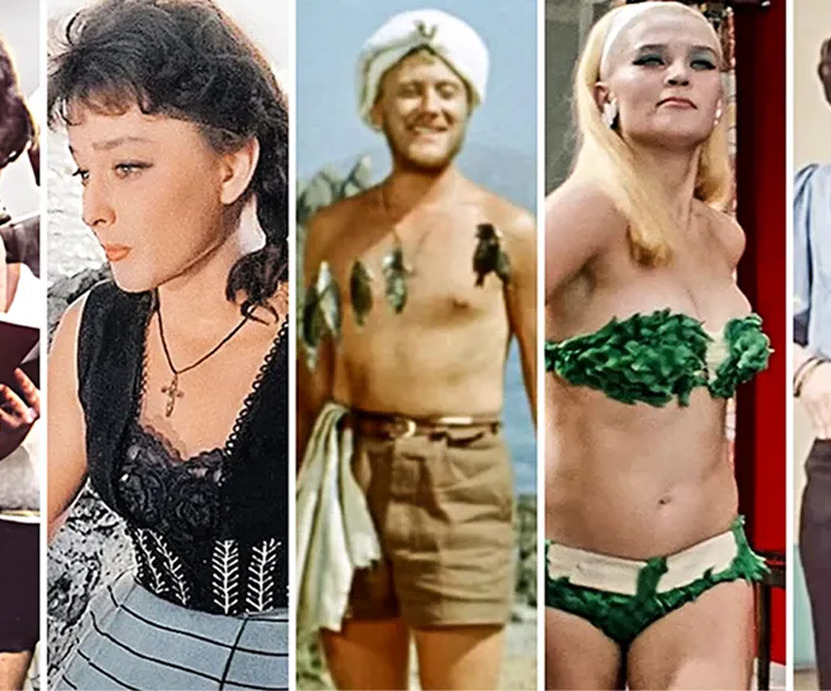
When it came to revolutionizing the wardrobe of Soviet actresses, Leonid Gaidai led the way. It wasn't because he had connections in the Central Committee of the Communist Party, but because laughter disarms. The audience's outrage was simply overshadowed by a wave of positivity. In the film "Operation Y and Shurik's Other Adventures," Natalya Seleznyova performed a striptease, but it was talked about with a smile. Who could accuse the kindest and most naive character of Soviet cinema, Shurik, brilliantly portrayed by Alexander Demyanenko, of lust? Gaidai and all his actors got away with such mischief, and a precedent was set! Showing open female swimsuits called bikinis on Soviet screens became unofficially allowed from that moment on. Actress Anastasiya Vertinskaya inadvertently lobbied for décolletage in the USSR. "Man-Amphibian" was one of the most exotic films of the 60s. The film seemed to have been made not in the USSR and not for the USSR. Anastasiya Vertinskaya was a minor when playing the role of Guttier. When the film was released, the critics, like sea devils, pounced on the girl: their complaints were related to the fact that she appeared too often in a swimsuit on screen and changed dresses even more frequently. And her décolletage became truly provocative. It caused a stir! The combination of the actress's sultry beauty and her passionate performance worked wonders: Anastasiya Vertinskaya became the sex symbol of Soviet cinema. Yes, décolletage was also a weapon for Lyubov Orlova, but it was thanks to Vertinskaya that these "gates of sexuality" were opened for other directors.
In Soviet films, men rarely appeared in shorts before the release of the film "Three Plus Two." The tanned legs of Andrey Mironov, Yevgeny Zharikov, and Gennady Nilov had no less of an impact on Soviet women than Natalya Kustinskaya's and Natalya Fateeva's swimsuits had on the male audience. Yes, people wore shorts at resorts in the Soviet Union, but not on screen... It was a small revolution. It was shorts that contributed to the transformation of Andrey Mironov into a male sex symbol of that time. Amazingly, just a couple of years before the release of the cult comedy, wearing shorts on the street could result in a fine.
Actress Svetlana Svetlichnaya wore a mini robe. During the filming of "The Diamond Arm," Gaidai already ignored censorship. As a result, Svetlichnaya's shot in the most erotic scene of Soviet cinema completely captivated the Soviet audience. It was done without any attempt to challenge morals. Svetlichnaya played the villain without pearl buttons, while Nikulin's character repented desperately and sincerely, and his guilt was questionable. And perhaps no other actress achieved as much sympathy and respect as Gorobchov's wife (Nina Grebeshkova). Nevertheless, the concept of the mini ceased to be forbidden for both dresses and skirts. Everyone wore them, but it was a bombshell for the cinema.
Actress Lia Akhedzhakova appeared in flared pants. Flared pants had already been worn by Soviet actors, especially by young ones playing high school students, but it was Lia Akhedzhakova in Eldar Ryazanov's masterpiece who claimed the female image. Secretary Kalugina Veronika brilliantly played the role of a Soviet fashionista. She convincingly delivered her verdicts on what outfit should be worn at the moment, and if "Fashion Verdict" had appeared in the 70s, she would have become its main judge. How well she wore flared pants! Who would say that she was only one and a half meters tall? It was a powerful signal for Soviet female viewers and other filmmakers. Men don't miss such a woman!
Svetlana Nemolyaeva, who played herself throughout her career, was loved for a reason.